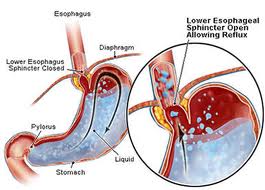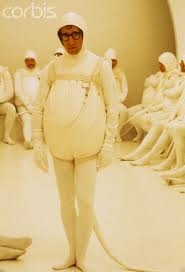Now Thank We All Our Sphincters
Last week son Ned sent me a link to a blog posting with the note – “Mom, I thought this was funny – it seemed like something you might write.” The essay was entitled: “On Buttholes,” authored by one Mia Warren who spends 900 words discussing the fact that she has never seen hers nor has she seen anyone else’s. Then there are a few psychosocial comments about where buttholes fit in the gamut of sexual intimacy. (http://thoughtcatalog.com/2012/on-buttholes/#.T2alGuKcjss.mailto )
At first, I was a little miffed that Ned thought this topic was within my repertoire. It’s not that I am prudish –in fact I think that everyone secretly enjoys a jolt of potty humor every now and then, but it is a tricky business to write about – going for the crotch smacks of desperation and there is a fine line between insightful social commentary and gross-out shock value. I feltthat Ms. Warren was just a bit over the line, but I decided to take Ned’s comments as a challenge – can I tackle the same subject, but be on the safe side of decorum?
So I am going to take a very anatomic and physiologic approach and steer clear of the social taboos enveloping our nether regions. And in fact, I am going to broaden the subject to discuss sphincters, a collection of very hard-working but under-appreciated muscles that are sprinkled throughout our bodies. Sphincters are circular muscles that function to create tight seals that open and close as need be. If you want a visual representation of a sphincter, find someone who plays a brass instrument and ask them to  demo their lips when they hit a high note, or you can always purse your own lips and look into the mirror. For an example of the type of pressure that a sphincter must maintain think of the dramatic plume of pressurized air spouting from the blow hole of a whale.
demo their lips when they hit a high note, or you can always purse your own lips and look into the mirror. For an example of the type of pressure that a sphincter must maintain think of the dramatic plume of pressurized air spouting from the blow hole of a whale.
Let’s take a quick tour. The iris is a sphincter, opening and closing in response to the light level. The story of the iris might be fascinating –a tiny wisp of a muscle that somehow has acquired the wisdom to recognize just the right amount of light beaming onto our fragile retinas. However, I am going to focus here on our most socially important sphincters, namely those along our urinary and digestive systems. I can quickly dismiss the disappointing urinary sphincter, since, in women it is a flimsy and timid affair that frequently cannot stand up to the pressure of a sneeze, a heart-felt guffaw or a slumping uterus. Surgery requires mesh or tape to hike up the sphincter and give it more oomph. Unfortunately these implants don’t work that well and cause their own problems, eroding and such – you just don’t want to know. In fact, late night TV is littered with ads recruiting women for a class action lawsuit against the manufacturers.
The digestive tract is studded with sphincters that create different compartments. For example, there are sphincters at the entrance and exit of the stomach, which isolate the acid swill of the digestive juices from the esophagus at the top end, and the small intestine  at the bottom end. If you have heart burn, this means your upper sphincter has sprung a leak and the acid is burning the tender lining of your esophagus. Surgery is similarly not that successful – the alternative solution is just to neutralize the acid in your stomach with drugs like Prilosec. Very occasionally this sphincter will overclench and one of the treatment options is an injection of Botox – yes, the same drug that is used cosmetically to paralyze the tiny muscles causing wrinkles can be used to paralyze a honking big sphincter.
at the bottom end. If you have heart burn, this means your upper sphincter has sprung a leak and the acid is burning the tender lining of your esophagus. Surgery is similarly not that successful – the alternative solution is just to neutralize the acid in your stomach with drugs like Prilosec. Very occasionally this sphincter will overclench and one of the treatment options is an injection of Botox – yes, the same drug that is used cosmetically to paralyze the tiny muscles causing wrinkles can be used to paralyze a honking big sphincter.
There are also sphincters between the stomach and the small intestine, and between the small intestine and the large intestine, but let’s go downstream to the anus to the marvel at this structure from a purely anatomic point of view. Trust me, I have no other agenda here except to let the sun shine where it normally doesn’t. In my work of analyzing new medical technologies, I have spent a large amount of time in this anatomy and believe me, the best minds in medicine have struggled mightily to come up with solutions to a spent sphincter,mostly to no avail. I have come to recognize anal sphincters as an engineering feat of staggering genius and an absolute prerequisite for any social animal living in a confined space. We applaud our oversized frontal lobes, bipedalism and opposable thumbs as the secret to our success as the master puppeteers atop the food chain, but just think about it – voluntary sphincter control was a key infrastructural step. Quite simply, in the human world, you cannot shit where you live. Even dogs realized this – they could not be human companions without a sophisticated sphincter system.
So here are the details. Remember set aside your squeamishness here! There are two anal sphincters, the upper one that we have no conscious control over, and the lower one that we can open and close at will. The upper, or internal sphincter, first experiences increasing pressure from above – and this next thing just totally blows me away – somehow this muscle is able to sample the pressure to determine whether it is solid, liquid or gas. (I should also give props to the male urinary sphincter, which can miraculously differentiate between urine and sperm). Gas, in most cases, is more socially acceptable, so the upper sphincter opens to let it pass. The internal sphincter seems to be more circumspect about liquid or solid, but eventually the baton is passed to the external sphincter, the ultimate decision maker. This is where voluntary control comes in, requiring complex trafficking between the brain and the gut to choose the right time and  place. I am reminded of the hilarious skit in the Woody Allen movie “Everything You Wanted to Know About Sex But Were Afraid to Ask.” Woody is dressed up as a sperm, waiting in the launch pad while his “owner” is on a romantic date. Woody nervously waits while the movie cuts to the control room, filled with consoles with blinking lights and mission control specialists running around in white jackets. The commanders are Tony Randall and Burt Reynolds who coordinate all the elements required for a successful launch. They communicate with the steamy engine room where a supervisor yells at his sweaty workers struggling to keep the hydraulics up and running. The supervisor is wearing a tee shirt showcasing his luxurious back hair, and his men are all wearing silver hard hats.
place. I am reminded of the hilarious skit in the Woody Allen movie “Everything You Wanted to Know About Sex But Were Afraid to Ask.” Woody is dressed up as a sperm, waiting in the launch pad while his “owner” is on a romantic date. Woody nervously waits while the movie cuts to the control room, filled with consoles with blinking lights and mission control specialists running around in white jackets. The commanders are Tony Randall and Burt Reynolds who coordinate all the elements required for a successful launch. They communicate with the steamy engine room where a supervisor yells at his sweaty workers struggling to keep the hydraulics up and running. The supervisor is wearing a tee shirt showcasing his luxurious back hair, and his men are all wearing silver hard hats.
The same scenario could be applied to our sphincters down below. The sphincter opening is just the beginning, setting off an exquisite synchrony of muscle contractions throughout the floor of the pelvis. Baseball aficionados still insist that the best example of  coordination is “The Catch” by Willie Mays – and on-the-run, over-the-shoulder catch on the warning track. Mays then pivoted, lost his hat, and threw a laser to third base preventing the tying run. I submit that on a daily basis, the sphincter performs the same caliber feat.
coordination is “The Catch” by Willie Mays – and on-the-run, over-the-shoulder catch on the warning track. Mays then pivoted, lost his hat, and threw a laser to third base preventing the tying run. I submit that on a daily basis, the sphincter performs the same caliber feat.
Unfortunately, there are a few design flaws. The brain can overthink things and the intestines sometimes have a mind of their own. It’s called the gut brain and refers to the extensive network of nerves running along its entire length, a remnant of the simple needs of our immobile ancestors who did nothing more than cling to a rock and hope that food dropped right into their laps. Misguided gray matter or a roguish gut brain can spell disaster. There is a saying among athletes, “Lose your legs, lose your friends,” referring to the isolation when an injury or age prevents socialization through sports. The same could be said about a dinged up sphincter. So please join me in paying homage to our sphincters, those hard-working and under-appreciated back office types that keep us in the game.
Based on the Hymn: Now Thank We All Our Gods
Now thank we all our sphincters with hearts and hands and voices
What wondrous things they do, in whom this world rejoices;
It’s mother nature’s gift and every day we pray
Our sphincters stay intact until our dying day.
Based on the Hymn: Morning Has Broken
My sphincter has broken, I’m in mourning
My body has spoken, don’t like what I heard
I pray for the doctoring, pray night and morning
I pray for solutions, bring me back to the world.
Based on the Hymn: I Sing a Song of the Saints of God
I sing a song of sphincters all
Faithful and brave and strong
Who toil for us deep within
The whole of our good lives long
You can meet them in crannies, nooks or crevasse
In the stomach or bladder, but that one in the ass
It knows what to do with a solid or gas
If it’s gas, it can let it pass
Follow Liza Blue on:
Share:
